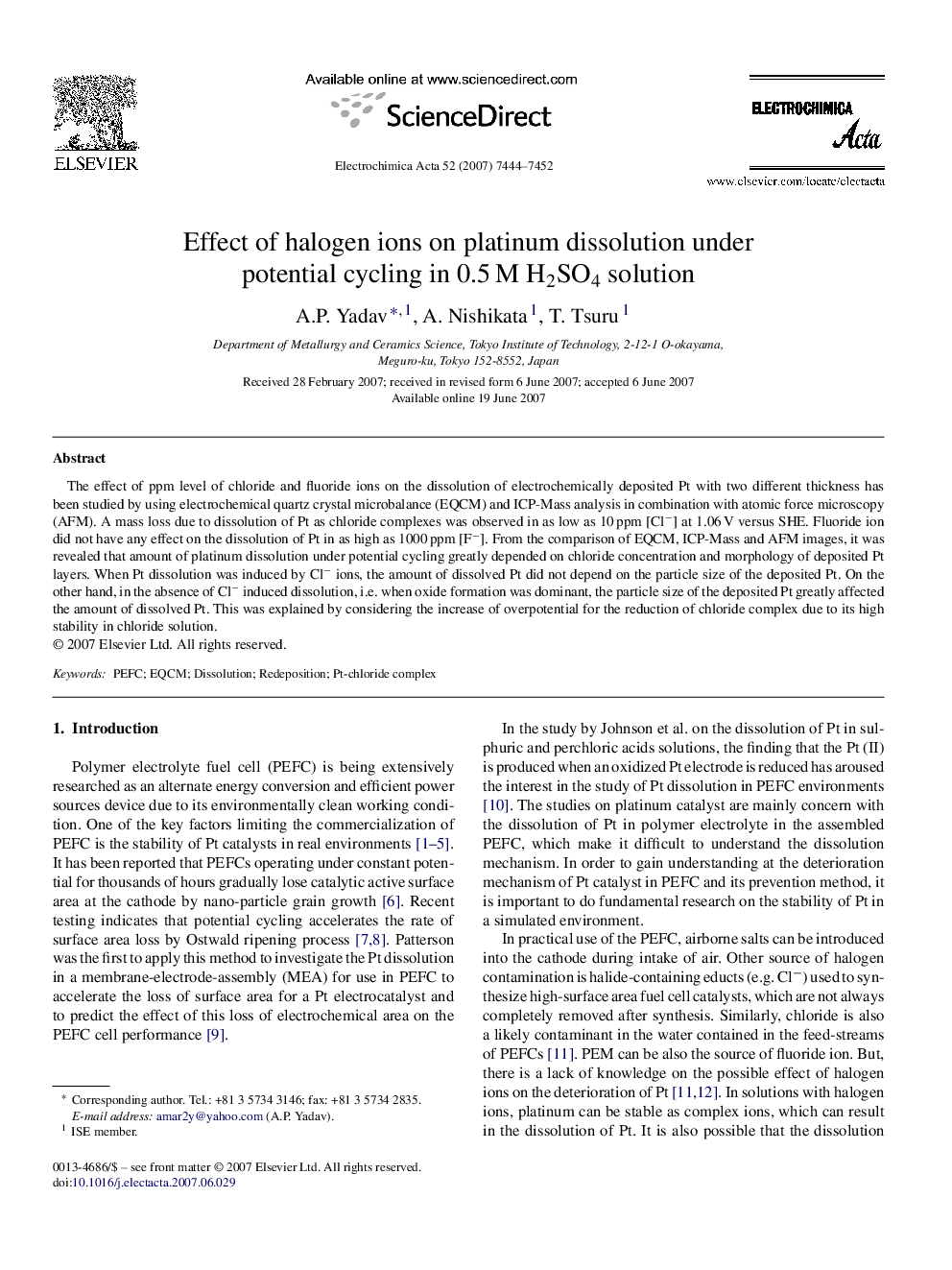| Article ID | Journal | Published Year | Pages | File Type |
|---|---|---|---|---|
| 195828 | Electrochimica Acta | 2007 | 9 Pages |
The effect of ppm level of chloride and fluoride ions on the dissolution of electrochemically deposited Pt with two different thickness has been studied by using electrochemical quartz crystal microbalance (EQCM) and ICP-Mass analysis in combination with atomic force microscopy (AFM). A mass loss due to dissolution of Pt as chloride complexes was observed in as low as 10 ppm [Cl−] at 1.06 V versus SHE. Fluoride ion did not have any effect on the dissolution of Pt in as high as 1000 ppm [F−]. From the comparison of EQCM, ICP-Mass and AFM images, it was revealed that amount of platinum dissolution under potential cycling greatly depended on chloride concentration and morphology of deposited Pt layers. When Pt dissolution was induced by Cl− ions, the amount of dissolved Pt did not depend on the particle size of the deposited Pt. On the other hand, in the absence of Cl− induced dissolution, i.e. when oxide formation was dominant, the particle size of the deposited Pt greatly affected the amount of dissolved Pt. This was explained by considering the increase of overpotential for the reduction of chloride complex due to its high stability in chloride solution.
